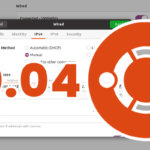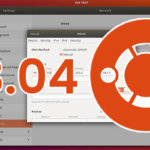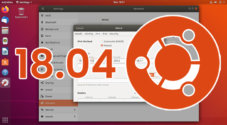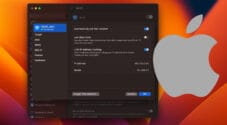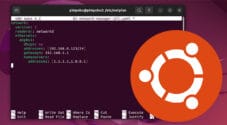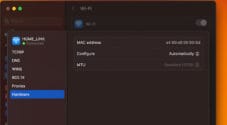This quick guide will show how you can set a static IP address on a Mac.

When your Mac connects to a router, it automatically assigns an IP address from a pool. While some routers attempt to ensure the same IP address is given on reconnects, this is not guaranteed.
Ideally, you would configure your router to assign the same IP to your Mac. However, you may not always have the ability to do this.
A way to work around this is to configure your Mac to ask for a static IP address when it connects to the router. Instead of asking for an IP address when it connects to the router, your Mac will attempt to connect with the defined IP.
You may want a static IP address on a Mac if you are running any sort of server on it. For example, if you were running Apache on your Mac it stops you from finding your device’s IP address every time you want to share access.
The following section will show you the simple steps to set a static IP address on the Mac operating system.
Setting a Static IP Address on Mac OS
If you cannot set a static IP address for your Mac using the DHCP reservation ability of your router, there is a backup option that we will be showing shortly.
That option is to adjust your Mac’s settings to request a specific IP address. The advantage of doing it this way is that you don’t need access to your network’s router.
The downside is that there is no guarantee that you will always be able to get that IP address. The router may hand it to a different device at any time as it is not a reserved address.
1. To begin, we must navigate to the “Network” settings page within the system settings.
First, click the Apple icon on the top-left corner of the screen to open the “Apple menu”.

2. With the Apple menu, open you will want to click the “System settings...” option.
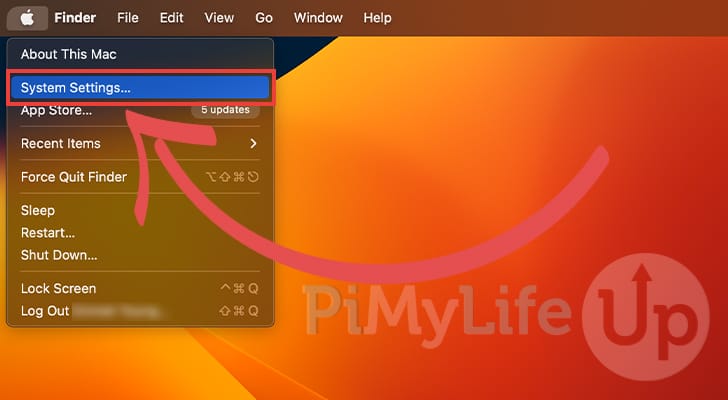
3. Now that we have the “System settings” open, you will want to navigate to the “Network” screen (1.).
You will see a list of your available network devices on the network screen. You will want to select the one you currently use (2.).

4. Once you have selected a particular network, you now want to click the “Details” button next to the connection.
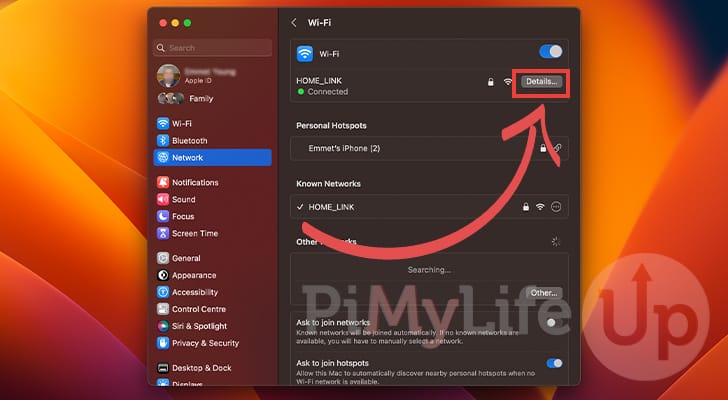
5. Finally, with the details page open, you will need to change to the “TCP/IP” page to set a static IP address for your Mac.
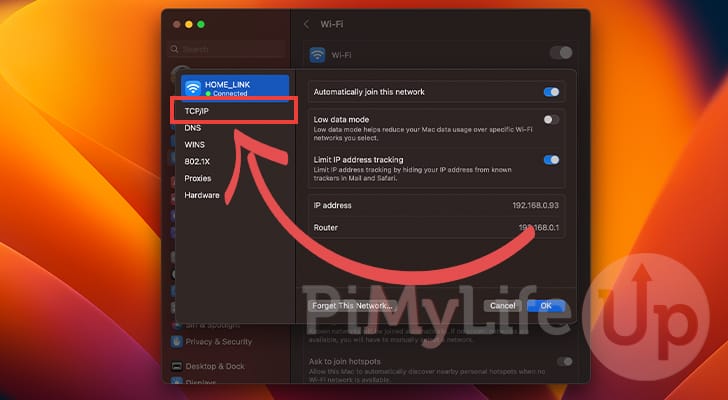
6. Within this page, we will need to change the “Configure IPv4” option, so the Mac won’t just accept the IP being given to it.
To change this, click “Using DHCP” to bring up a select box.
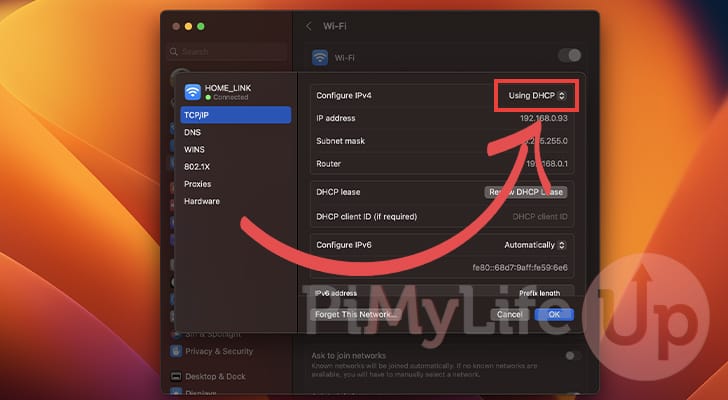
7. You will see that there are a few different options that you can select.
You can go with either the “Using DHCP with Manual Address” or “Manually” option. Both options will allow you to set a static IP address on your Mac.
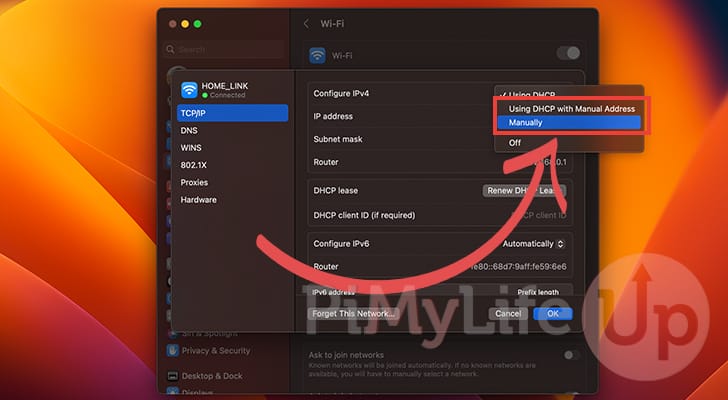
8. You can now set an IP address for your Mac to request from your router.
To change the IP, click the “IP Address” field (1.) and type in the static IP address you want your Mac to utilise. Please note that you can’t set an IP that would be out of the range your router is configured to hand out.
Once done, you can click the “OK” button (2.) to confirm your changes.
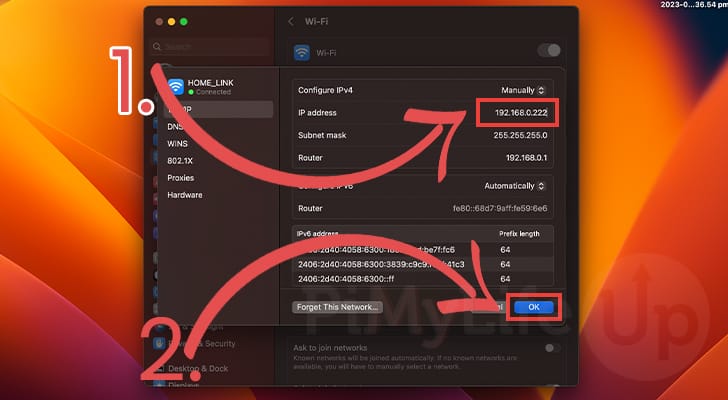
9. At this point, you have now successfully set your Mac to request a static IP from your router.
You may need to cycle your network connection before your Mac gets its new IP.
Please note that if you lose access to your network, it means that the IP you are requesting has likely been assigned to another device on your network, and the router can’t provide it.
Conclusion
Over the last section, we have shown you how you can set a static IP address on your Mac.
Setting an IP address directly on your Mac has some downsides, such as no guarantee that you will get that IP on every connection. However, it is a solid alternative when you can’t access the router.
Please feel free to comment below if you have any issues finding and setting a static IP on your Mac.
If you found this guide helpful, be sure to check out our other Mac OS guides.

